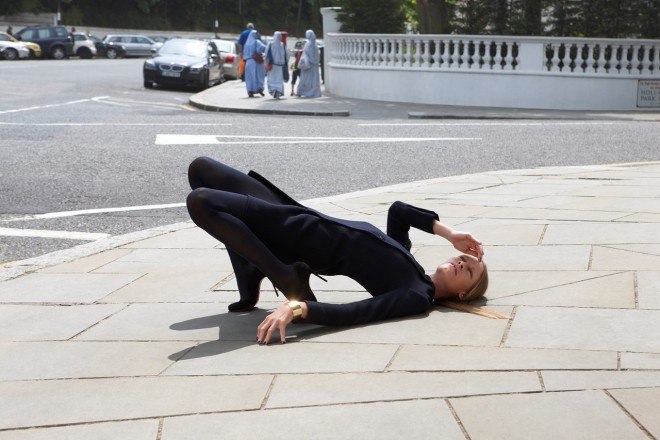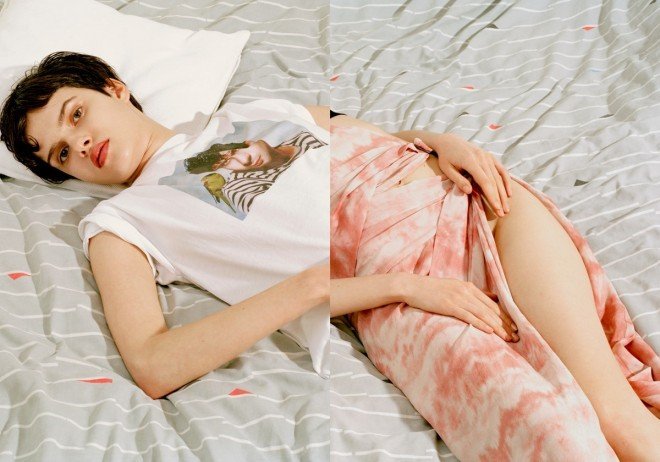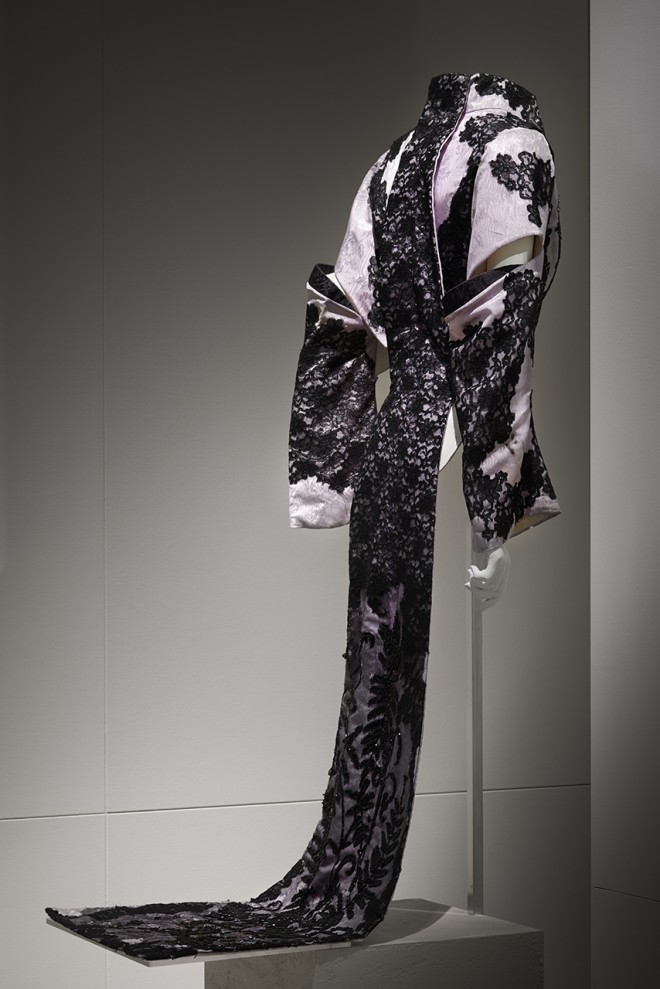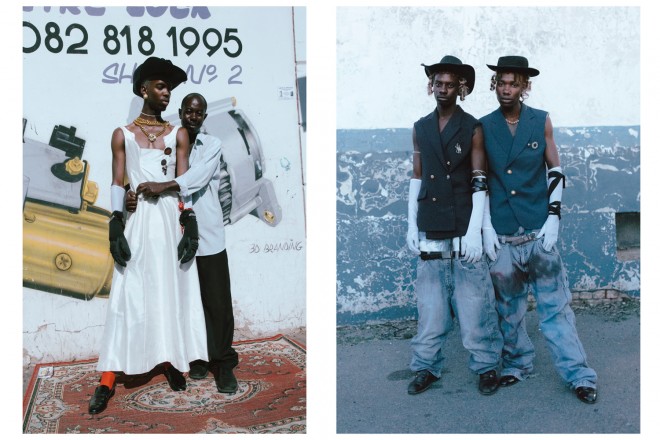Curation has somehow has become a dirty word these days. We think of a curator in the digital age as a bloodless algorithm editing the things we don’t want to see or interact with out of our feeds and experiences. The great shame of all of this is that curation in its truer sense is far less about editing out the things we don’t want to see and far more about shedding light on the things we didn’t.
A great curator – be that of an exhibit in a gallery or an assortment of bric-a-brac at the local car-boot – knows how to make things elevate each other within a fresh context. Discovering something in a single painting, say, is in and of itself an incredible thing, but being able to connect that indefinable something to a whole exhibition is where a curator shows their skill.
Shonagh Marshall is a Fashion Curator who embodies the contemporary make-up of the profession, and reminds us why curation is a job of such unique expertise. After completing her Fashion Curation MA at LCF in 2010 Shonagh went on to archive the Alexander McQueen collection ahead of the Met’s Alexander McQueen: Savage Beauty retrospective (!), and then to work on the Louboutin and Isabella Blow archives.
The rest of her CV is as impressive as those early projects would suggest, and since leaving her post as Curator at Somerset House in 2016 she has been flexing her muscles as an independent curator, as well as founding The Ground Floor Project with friend and AnOther Magazine Photo Editor Holly Hay.
With the fashion industry in recovery from a month of new collections, and ahead of the co-curated exhibition Posturing: Photographing the Body in Fashion (also with Holly Hay) now seemed like the right time to pick her brain about curating a disparate industry, and contemporary photography’s fascination with documenting the body within it.
How did you initially get in to curation – did you always know it was a job that somebody did?
Not at all. I studied Fashion History & Theory as my BA at Central Saint Martins and when I finished I wasn’t sure exactly what job I wanted to do. As a freelancer I was employed as a researcher for Somerset House’s first exhibition in 2007, in its current cultural iteration. It was a traveling show called Skin and Bones: Parallel Practices in Fashion and Architecture and it was then that I realised that I was really interested in curation. I applied to do the MA in Fashion Curation at London College of Fashion as a result, and studied under Judith Clark and Amy de la Haye, which was the most amazing training.
What was it that drew you to fashion in particular?
I started my BA in Fashion History and Theory when I was eighteen. It gave a historical overview of dress from renaissance to present day and teaching into the application of theory. Being a curator you need such an overarching knowledge of a subject I don’t think I would have been able to focus on another subject. The tools I have picked up over the years in how to consider fashion, applying historical knowledge to assess the contemporary for example I think is so important. Art History is something I am fascinated by personally but I am absolutely no expert! I love so much about the telling stories about clothing within an exhibition, with projects like Isabella Blow it was about the tale of a life lived through the garments but then Posturing: Photographing the Body in Fashion, which is about to launch, looks at the practice and process of fashion photography by making the link between the body and the garment.
Archival work is very solitary and organised, it is all about the process you are putting in place. Through doing this work into catalogue, photographing and boxing and storing the objects you have such an affinity with them. You learn about every mark or pulled stitch and note it down. When you are working on an exhibition the process is all about building a team around you: the graphic designer, the exhibition designer, lighting designer, the install team, the conservators. As a curator you are telling a story through the objects, bringing to life what you have noticed in the archive, and the team all works together to realise this for the visitor. It was such a lovely experience to be able to work on so many exhibitions about Isabella Blow after archiving her collection, there are so many hidden stories within the garments and accessories it is such a treat each time to tease them out.
Do you have a favourite forgotten gem that you’ve come across in your work?
I spent a lot of time throughout August at the Isabella Blow Collection reordering it and making sure everything was in the right place, after finishing archiving it nearly six years ago. When going through Isabella’s bags I found a nail polish that I had previously not noted down. There was something so evocative about this silver liquid, the brush once used to apply varnish to Isabella’s nails. I wondered if in the next exhibition, we are hoping to stage, if contextualised in the right way it might be able to conjure in the visitor the same reaction it had had in me.
You have worked on some very culturally important exhibits, such as Isabella Blow: Fashion Galore! How do you approach the legacy of documenting the life’s work of such significant figures?
Isabella Blow’s legacy through her clothing is a project I have worked on since 2011. Firstly by archiving the collection and then by co-curating the 2013 exhibition Isabella Blow: Fashion Galore! At Somerset House. I still work with the Isabella Blow foundation and have done a subsequent exhibition in Sydney and we hope to stage more to raise money for the charities we support and student bursaries the foundations runs.
Working with the clothing to tell Isabella’s story is really amazing, I always think that like other figures in history she was building her own myth through the objects she amassed. Every object in the collection has a story attached, through either her personal relationships or where she wore it. Daphne Guinness bought the collection so that she would be able to keep Isabella’s legacy alive through the garments and accessories so it is a real honour to be a part of that.
Do you think fashion is inherently fine art?
No I think art and fashion are two completely different things, which sometimes speak to one another but are incomparable.
What do you see as the difference of approach between choosing how to display a piece of clothing and a priceless painting?
I think that curating fashion and curating art are two different disciplines and the approach is so wildly different. The interventions used within an exhibition of dress are selected and considered to give further context to the story, however within a fine art exhibition the art is centre-front in laying the narrative.
It seems that everyone is a ‘curator’ today. Do you think the term has lost some meaning, and does its meaning matter?
A curator is a keeper of a collection and as I don’t actually manage a museum collection, and I never have, I think the meaning of the word has changed somewhat. The application of the word curator to define making lists, or selecting something, is another mutation of this. I don’t know for me it is great as I think so many doors have opened over the last ten years for curators in light of it.
You are also working on a new cultural programme for Chess Club London – would you say programming and curation are two sides of the same coin, or fundamentally different?
They are so different. I really love working with Holly Hay to programme the events at Chess Club, it is such a lovely project. We think there is something so brilliant about learning nuggets of information and Holly and I set out that everything we did at Chess Club would result in absorbing tidbits that you could then relay at dinner to your friends. We do such different things there and meet so many amazing people. Last month we had an expert tea taster who travels the world to find the best tealeaves, and this month we have Clym Evernden coming to talk about his inspirations amongst so many other things.
Exhibits are most often worlds built for the public – what do you think is valuable about working on an experience for a more private sphere?
It is to nice to build a rapport with people who come frequently to the events at Chess Club. Also we have figured out what people like coming to, and can incorporate their feedback. It is much more organic than mounting a temporary exhibition which is on and then dismantled with no opportunity to change anything. It would be really interesting to do an exhibition that morphed with the times and opinions, I wonder how you could make that work?
Can you tell us a little about your new project ‘Posturing’ – what made you decide to focus on the body?
I had been thinking about it for a while. About two years ago I proposed a promenade contemporary dance commission around the body in fashion when I worked as curator at Somerset House, which didn’t happen. However it got me thinking. I noticed a shift, away from the sexualized body within fashion photography and I thought a group of contemporary photographers were exploring a new approach to gesture and pose in their work. I wondered how we could present this within a group exhibition. This exhibition is now launching on the 1st November and is entitled Posturing: Photographing the Body in Fashion, the first of a three part project the second looks at filming the body in fashion and the third, a book, writing the body in fashion.
What do you think that the repeated distortion of the body in fashion imagery, the ‘new aesthetic’ the exhibit focuses on, tells us about fashion today?
It is less about fashion today and more about the presentation of fashion. Shifting trends each season is the very foundation the fashion system is built upon but with this project we evoke thinking (hopefully) around how this then impacts on the way in which it is captured across different mediums. The approach employed by all the photographers within the exhibition is one of wit and subversion could this be a reaction to the world we live in now? Should we take fashion very, very seriously? I don’t know – but these are the kind of questions we would absolutely love the work to inspire in the visitor.
For Holly and I the whole project is about mediums and imprints. The body is the common thread but applying this theme to look at the way in which it, and in turn the clothing, can be captured in a photograph, a film or within the written word felt a really exciting way to capture different thoughts, insights and opinions. The Ground Floor Project, the company Holly Hay and I have founded, is all about creating conversations instead of offering conclusions and full stops. All the work is so contemporary that we wanted our exhibition, film and book to become part of the conversation as opposed to offering reflection and analysis to something that has already happened.
Do you have a favourite fashion image? A favourite collection?
I couldn’t possibly pick! I love researching imagery and slotting them together, I don’t think I could single one out.
And finally, apart from your own, can you recommend any new or upcoming fashion exhibits we should look out for?
I am really excited about Amy de la Haye’s next exhibition at Brighton Museum on the artist Gluck. It isn’t fashion but I can’t recommend Andy Holden and Peter Holden’s Artangel exhibition ‘Natural Selection’ enough, it is amazing. I also loved Rachel Whiteread at the Tate Britain is fantastic. I am super looking forward to going to see the Basquiat exhibition at the Barbican.
Posturing: Photographing in the Body in Fashion co-curated by Shonagh Marshall and Holly Hay runs 2nd – 12th November 2017: 10 Thurloe Place, London SW7 2RZ. The exhibition is free of charge.







 PREVIOUS
PREVIOUS

 Twitter
Twitter
 Tumblr
Tumblr
 YouTube
YouTube
 Facebook
Facebook
 Instagram
Instagram
